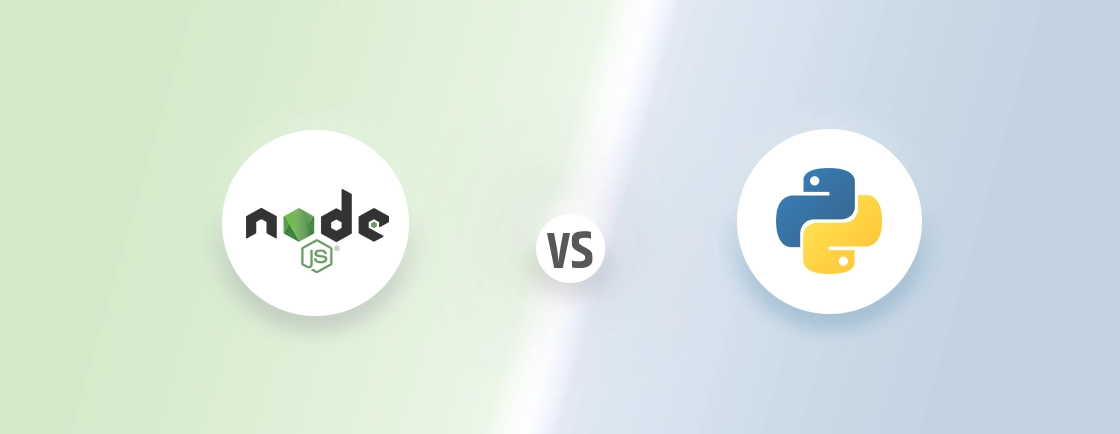Table of Contents
Creating a mobile app starts with choosing the right development platform. There are several options available and two of the popular ones are React Native and Flutter. They lead the cross-platform development space and offer distinct advantages in performance, development speed, and ecosystems.
React Native, backed by Facebook, leverages JavaScript and a mature community. Flutter, on the other hand, is Google’s offering and uses Dart to provide a highly customizable UI with native-like performance.
In this blog, I’ll explain why mobile app experts compare React Native vs Flutter and when you need to choose which one. So let’s get straight into it with a comparison.
React Native vs Flutter: Comparison Table
| Factor | React Native | Flutter |
|---|---|---|
| Backed By | Facebook (Meta) | |
| Language | JavaScript (with React) | Dart |
| Performance | Near-native (uses native modules) | High (compiles to native ARM code) |
| UI Components | Relies on native components | Customizable widgets |
| Hot Reload | Supported | Supported (faster with state retention) |
| Community | Larger (older, more mature) | Growing rapidly |
| Learning Curve | Easier for JS/React devs | Steeper (Dart is less common) |
All in all, React Native is for when your team knows JavaScript or needs third-party native modules. Flutter, on the other hand, is for when you prioritize performance, unified UI, and faster development cycles.
Overview of React Native
Developed by Meta (formerly Facebook), React Native is an open-source framework for building cross-platform mobile apps using JavaScript and React. With it, developers can write code once and deploy it on both iOS and Android. That is while it still delivers a near-native user experience.
React Native bridges JavaScript and native code, so developers can access device APIs while maintaining a single codebase. React Native relies on native UI components, making it feel more like a true native app.
Key Features
- Uses Native Components: Renders platform-specific UI elements for better performance.
- JavaScript Ecosystem: Leverages npm, React, and a vast library of third-party modules.
- Live & Hot Reloading: Speeds up development with instant code updates.
Pros of React Native
- JavaScript/React Ecosystem: Leverages existing web dev skills, large npm library support.
- Native Performance: Uses real platform components (iOS/Android) for smoother UX.
- Strong Community: Mature, widely adopted (used by Facebook, Instagram, Shopify).
- Live Reload & Fast Iteration: Quick UI updates without full rebuilds.
- Third-party Plugins: Extensive native module support (camera, Bluetooth, etc.).
Cons of React Native
- Performance Bottlenecks: Heavy animations/computations can lag due to JavaScript bridge.
- Dependent on Native Modules: Some features require platform-specific code.
- UI Consistency Issues: Slight differences between iOS/Android components.
- Debugging Challenges: Complex native layer interactions can be tricky.
React Native is perfect for apps needing deep native integrations (e.g. camera, Bluetooth). And projects needing faster development with reusable code will benefit from React Native development services.
Overview of Flutter
Flutter is an open-source UI toolkit developed by Google. With it, you can build natively compiled, cross-platform apps from a single codebase. React Native relies on native components, but Flutter uses its own high-performance rendering engine (Skia) to draw widgets. That ensures consistent visuals across iOS, Android, web, and desktop.
Flutter doesn’t rely on native UI components. Instead, it draws every pixel on the screen using its own engine. It eliminates platform inconsistencies but requires more effort for platform-specific behaviors.
Key Features of Flutter
- Single Codebase, Multiple Platforms: Deploy to iOS, Android, web, and desktop with minimal changes.
- Customizable Widgets: Highly flexible UI components with pixel-perfect control.
- Dart Language: Optimized for fast execution with AOT (Ahead-of-Time) compilation.
- Hot Reload & Hot Restart: Faster UI iteration with stateful hot reload.
- Growing Ecosystem: Backed by Google, with strong adoption by the likes of LG, Headspace, Xiaomi, and more.
Pros of Flutter
- High Performance: Compiles to native ARM code (no JavaScript bridge).
- Pixel-perfect Custom UI: Own rendering engine (Skia) for 100% design control.
- Single Codebase: Works on iOS, Android, web, and desktop with minimal changes.
- Hot Reload & Faster Development: Retains app state during updates.
Cons of Flutter
- Larger App Size: Includes engine and widgets, increasing download size.
- Dart Language: Less familiar to devs (steeper learning curve than JS).
- Younger Community: Fewer third-party libraries vs. React Native.
- Limited Native API Access: Some advanced features still need platform channels.
If your app needs high-performance animations, custom, branded UIs, or faster development, Flutter is the way to go. And the best option for you would be our Flutter development company.
What’s the Difference Between React Native and Flutter?
The overviews give you an idea on what these platforms are and how they work. But for a better understanding, let’s compare them based on the key factors.
Learning Curve
React Native leverages JavaScript (or TypeScript) and React, making it easier for web developers to transition into mobile app development. Since JavaScript is one of the most widely used languages, onboarding new developers is relatively quick. However, React Native still requires some understanding of native mobile concepts (e.g., bridging, platform-specific modules).
Flutter, on the other hand, uses Dart, a less common language optimized for UI development. While Dart is easy to learn (similar to Java/JavaScript), developers unfamiliar with it face a steeper initial hurdle. Flutter’s widget-based approach is powerful but requires learning an entirely new framework.
Verdict: React Native wins for teams with JavaScript/React experience. Flutter requires more upfront learning, especially for Dart.
Programming Language
React Native relies on JavaScript, a dynamically typed language with a massive ecosystem (npm, React, Expo). This allows for rapid prototyping but can lead to runtime errors if not properly managed (TypeScript helps mitigate this).
Flutter uses Dart, a compiled language with strong typing and ahead-of-time (AOT) compilation. Dart is optimized for smooth UI rendering but lacks JavaScript’s vast library support.
Verdict: React Native wins for ecosystem flexibility. Flutter’s Dart is more performant but less widely adopted.
Performance
React Native runs JavaScript code in a separate thread and communicates with native modules via a bridge, which can introduce latency in complex animations or heavy computations. However, for most apps, performance is near-native.
Flutter compiles directly to native ARM code, eliminating the JavaScript bridge. Its Skia rendering engine draws every pixel, ensuring 60fps animations even in graphics-heavy apps.
Verdict: Flutter wins for CPU/GPU-intensive apps (games, animations). React Native is sufficient for standard apps but may lag in high-performance scenarios.
Development Speed
React Native benefits from fast iteration (live reload, Expo) and a mature ecosystem, reducing boilerplate. However, debugging native module issues can slow things down.
Flutter’s hot reload is faster and more reliable (retains app state better than React Native). Its widget-based UI system allows for rapid prototyping, but Dart’s smaller ecosystem means some features require custom implementation.
Verdict: It’s a tie. React Native has more tools, but Flutter’s hot reload is superior.
Extensions
React Native has a larger community and more third-party libraries (e.g., React Navigation, Redux). However, some modules rely on native dependencies, requiring additional setup.
Flutter’s ecosystem is growing but still lags behind React Native in third-party packages. Its pub.dev repository is well-maintained, but complex native integrations may need custom platform channels.
Verdict: React Native wins for plug-and-play libraries. Flutter is catching up but still has gaps.
Hot Reload Feature
React Native’s hot reload works well but sometimes loses state on larger changes, requiring a full restart.
Flutter’s hot reload, on the flip side, is more consistent, preserving app state even after significant UI changes. This makes UI tweaking faster and more efficient.
Verdict: Flutter wins for a smoother developer experience.
All in all, for most business apps, React Native is the safer choice. But for higher-performance, visually-rich apps, Flutter pulls ahead.
When to Choose React Native vs Flutter?
The purpose of both platforms is to build quality cross-platform apps. But there are distinct scenarios where either would be suitable.
When to Choose React Native?
- Your team knows JavaScript/React.
- You need deep native integrations (e.g., Bluetooth, ARKit).
- You want faster onboarding and a larger community.
When to Choose Flutter?
- You need high-performance animations (e.g., gaming, interactive UIs).
- You prioritize a single codebase for mobile, web, and desktop.
- You want full control over UI design without native constraints.
If you need a better idea on which of these platforms would be better for your app, connect with our mobile app development company.
So, Which is Better? React Native or Flutter?
Choosing between React Native and Flutter isn’t about which framework is “better”. It’s about which one is right for your project and team. Both frameworks are production-ready, backed by tech giants (Meta and Google), and power thousands of successful apps.
React Native is the safe, familiar choice for most projects. But Flutter is the future-forward option for teams wanting pixel-perfect control. Ultimately, your decision should come down to your team’s expertise, project requirements, and long-term goals.
If you need help with the platform selection and app development, hire mobile app developers today!
FAQs on React Native vs Flutter
Which is better for startup MVP development?
React Native is ideal if you need rapid prototyping with existing JavaScript skills. But Flutter is better if you prioritize UI consistency across platforms and plan to scale.
Which is better for beginners: React Native or Flutter?
React Native is easier if you already know JavaScript/React, as it uses familiar web development concepts. But Flutter has a steeper initial curve due to Dart, but its widget-based system is intuitive once mastered.
Which framework is better for UI customization?
Flutter excels here with its widget-based approach, allowing pixel-perfect control over every UI element. React Native, on the contrary, relies on native components, which can lead to platform inconsistencies in styling.
Compare the best tech side by side.
Our in-depth comparisons help you see features, pros & cons, and choose the right tools confidently.




